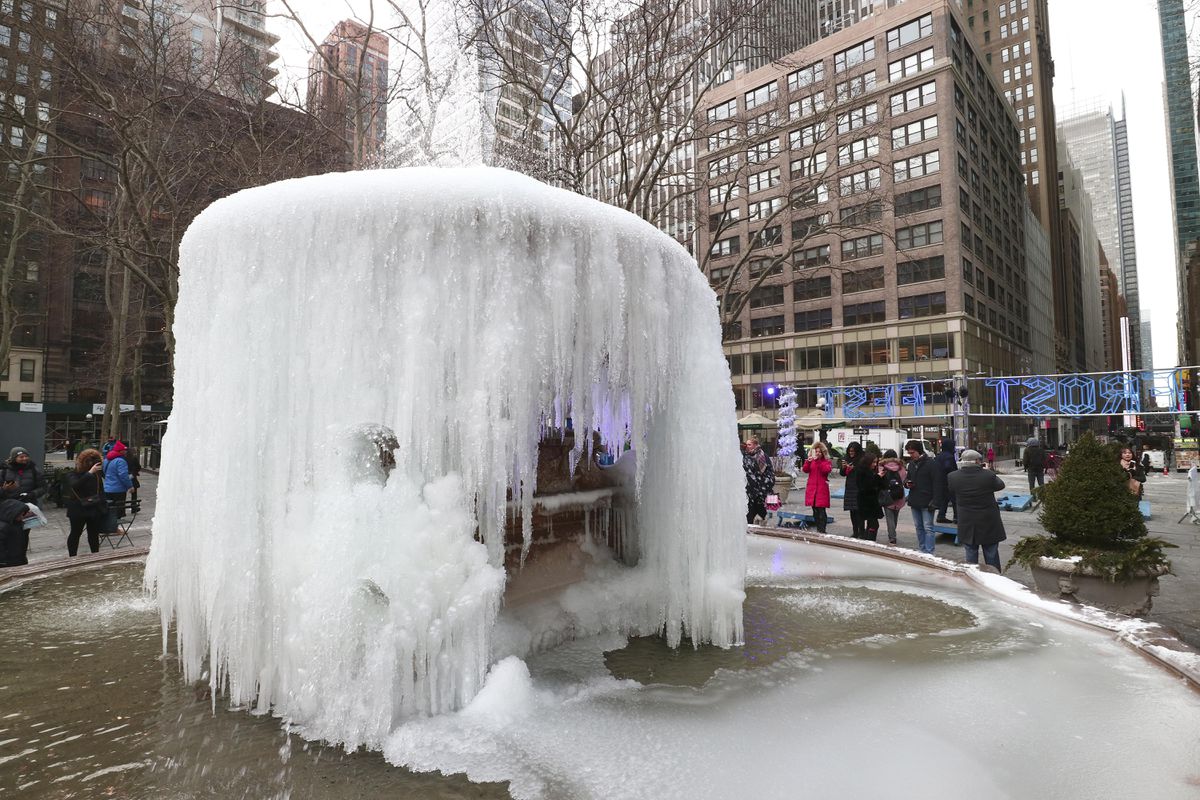
NEW YORK, NY – FEBRUARY 1: People take pictures of the Josephine Shaw Lowell Memorial Fountain in … [+]
Getty Images
The polar vortex has gone wandering again. The weather pattern that’s most at home over — you guessed it — Earth’s polar regions has started pushing south, and is bringing plenty of frigid Arctic temperatures and snow along with it.
The polar vortex and its occasional southward migrations aren’t a new thing, but some are wondering if the wintry impacts barreling down on the United States right now might become more frequent thanks to climate change.
This has been a tough thing to study, owing in part to the fact that all the factors behind the behavior of the polar vortex aren’t fully understood.
But scientists do have a new tool this time around to study the phenomenon. The European Space Agency’s Aeolus wind monitoring satellite has been up and running for over a year now.

TOULOUSE, FRANCE – JUNE 4: In this handout photo provided by the European Space Agency (ESA), … [+]
Getty Images
Watching the winds around the edge of the polar vortex is one way to measure and monitor a meteorological event known as “sudden stratospheric warming” that can trigger extreme weather like what we’re experiencing in North America now.
“Changes in the wind structure in a sudden stratospheric warming event have never been observed directly at a global scale before,” said Corwin Wright, Royal Society research fellow at the University of Bath in the UK. “So far, our understanding of these changes has been developed using point measurements, measurements along localized aircraft flight tracks, through the use of temperature observations, and, primarily, computer models.”
Aeolus provides a window into the polar vortex as it evolves and bares down on population centers.

The animation uses data from ESA’s Aeolus wind satellite shows how the polar vortex in the lower … [+]
University of Bath/C. Wright
As of this writing Friday afternoon, storm and wind chill advisories are in effect in at least part of over half the states in the US. Temperatures up to forty degrees below normal Fahrenheit can be expected, with the impacts centered on the Upper Midwest and Great Lakes regions. Bundle up, Minneapolis and Chicago.
“We are currently observing a polar vortex event where we see it split into two, with one spinning mass of air over the North Atlantic and one over the North Pacific,” explained Anne Grete Straume, Aeolus mission scientist.
“The split leads to changes in the tropospheric circulation allowing cold air masses from the poles to more easily escape down to lower latitudes. At the moment, parts of North America seem to be experiencing colder weather than Europe, although we have seen events of cold air reaching quite far south in Europe over the past few weeks causing, for example, heavy snowfall in Spain.”
In addition to watching and analyzing the polar vortex in something closer to real time, the satellite will also help scientists understand if and what the relationship is between the phenomenon and our changing climate.
“What scientists would also like to understand is whether sudden stratospheric warming events might become more frequent owing to climate change,” says Straume.
“It is early days yet to draw any scientific conclusions from our Aeolus data, but work is certainly underway to shed new light on why this seasonal phenomenon can sometimes be extreme – watch this space.”
This article is auto-generated by Algorithm Source: www.forbes.com


